Chilinji Pass – Pakistan’s Remote Gateway to the Wakhan Corridor
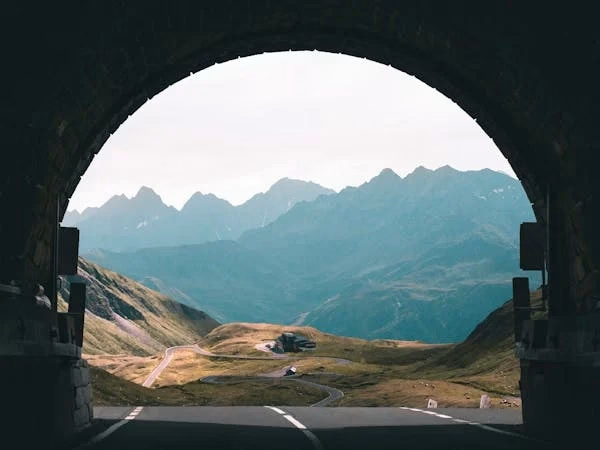
In the farthest reaches of northern Pakistan, where glaciers whisper their ancient stories and mountains tower like sentinels of forgotten time, lies a trail so remote that even seasoned travelers pause in awe—Chilinji Pass. Unlike the more famous tourist destinations of Hunza or Skardu, Chilinji doesn’t appear in glossy brochures or mainstream vlogs. And yet, for those who dare to follow the map north of Shimshal Valley, the reward is otherworldly: a trek through the heart of the Karakoram, where every footstep bridges history, solitude, and raw wilderness.
The first time I heard about Chilinji Pass, I was sitting by a bonfire in Passu, speaking to a local climber whose weather-worn face lit up at its mention. “That place,” he said, almost reverently, “is not just a pass. It’s a portal—into silence, into stories, into the Wakhan winds.” At that moment, I knew I had to see it for myself. Months later, after careful planning, fitness prep, and quiet trepidation, I found myself standing at the 17,503-foot-high saddle between Pakistan’s Shimshal Valley and Afghanistan’s Wakhan Corridor, overwhelmed not just by the scenery, but by the sense that I was part of a centuries-old trail once used by nomads, shepherds, and perhaps even spies.
Chilinji Pass is not for the casual traveler. It is for those who don’t just want to ‘see’ nature but want to feel it press into their bones, challenge their spirit, and offer a perspective of the world where WiFi signals fade but the pulse of the Earth grows louder. There are no roads, no cafés, no souvenir shops—only paths etched into the rocky sides of valleys, yaks munching in silent gorges, and glacial streams that make your skin sting and your soul awaken.
But that doesn’t mean it’s inaccessible. In fact, in recent years, a small but growing number of trekkers from Pakistan and abroad have begun to rediscover this pass, thanks to social media, increased awareness of the Shimshal region, and a thirst for true adventure that goes beyond the beaten track. For Pakistani trekkers, it offers the kind of high-altitude experience they might expect in the Alps or Andes—without needing a passport. For international tourists, it’s one of the last frontiers of pure, untouched trekking, blending culture, history, and high drama with minimal commercial interference.
What makes Chilinji Pass truly compelling, however, is not just its location or its altitude. It’s what it represents: a connection between worlds. At the top, you are literally standing at a geopolitical and ecological crossroads—between Pakistan and Afghanistan, between South Asia and Central Asia, between bustling valleys and the pristine Wakhan corridor. This is one of the few places where you can almost physically sense the intersection of Silk Road history and modern borderlines. It’s humbling.
I remember waking up one morning on the trek with frost on my sleeping bag, the sky slowly shifting from ink to lavender. My guide, a wiry man from Shimshal named Karim, handed me a cup of chai and pointed toward the east. “Over there, just beyond that ridge, is Afghanistan,” he said quietly. In that moment, the pass wasn’t just a destination—it was a dialogue between cultures, landscapes, and time itself.
This blog isn’t just a guide—it’s an invitation. Whether you’re a seasoned mountaineer looking for your next challenge, a cultural traveler yearning to walk old caravan routes, or a photographer seeking untouched horizons, Chilinji Pass offers something rare in today’s world: remoteness with relevance. It’s a reminder that not all treasures are paved with convenience. Some are carved from hardship, silence, and the willingness to keep walking forward when the trail disappears into mist.
So if you’re reading this in a city apartment, your boots tucked away and your gear gathering dust—this might be your sign. And if you’re a foreigner wondering whether Pakistan still holds true adventure beyond the Instagrammed Hunza peaks, let me assure you: Chilinji Pass is your answer. It is remote, yes. Demanding, absolutely. But unforgettable? Beyond words.
Let’s dive deep into this one-of-a-kind travel experience—how to get there, when to go, what to expect, and why Chilinji Pass may just be the most incredible hidden trail in Pakistan you’ve never heard of—until now.
Table of Contents
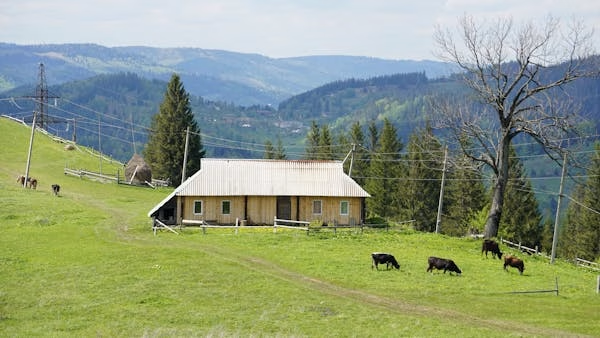
A Rare Window into the Wakhan Corridor
Here’s a fun fact to get us started: Chilinji Pass is one of the very few trekking routes in Pakistan that leads directly into the Wakhan Corridor of Afghanistan. Historically, this route was used by traders and shepherds moving between Central and South Asia. Today, it’s a high-altitude gateway that allows modern trekkers to follow ancient footprints across one of the most isolated and majestic frontiers on Earth.
Situated at approximately 17,503 feet (5,335 meters), Chilinji Pass is more than a mountain crossing. It’s an opportunity to trek through Pakistan’s rugged wilderness with views that stretch into the Hindu Kush and Karakoram ranges, unmarred by human development or digital distraction. The journey here begins from Shimshal Valley, and from there unfolds into a high-altitude trek that is as physically demanding as it is spiritually awakening.
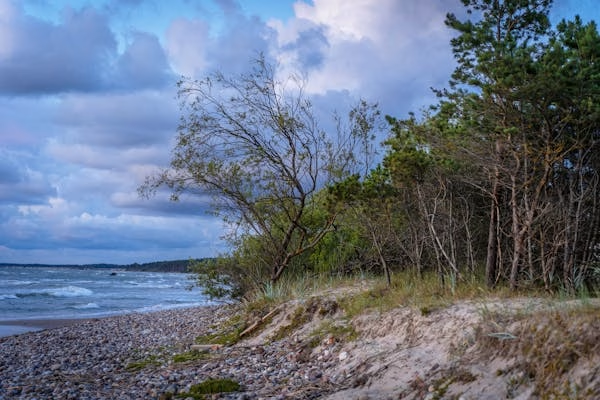
Key Features and Attractions of Chilinji Pass
High-Altitude Adventure: With its dramatic elevation and remote terrain, Chilinji Pass offers a true mountaineering experience for serious trekkers. It isn’t a beginner-friendly trail but provides a sense of raw, unfiltered adventure.
Shimshal Valley: Your gateway to Chilinji, Shimshal is known as the ‘Valley of Mountaineers.’ It’s a culturally rich, remote village in Upper Hunza where hospitality is legendary, and nature remains undisturbed. Spending time here before your trek offers a wonderful prelude.
Gorgeous Landscape Transitions: From alpine meadows to glacier crossings, the trail traverses through gorges, high ridges, rock formations, and snowy mountain passes. The variety of landscapes in a single trek is unmatched.
Wildlife Encounters: With luck, you might spot ibex, snow leopards, golden eagles, or marmots. The area falls near Khunjerab National Park and supports several endangered species.
Cultural Crossroads: At the summit of the pass, you can gaze into the mysterious Wakhan Corridor. This thin strip of land in Afghanistan was once a strategic passage on the Silk Road. From here, you realize how connected ancient civilizations were.
Top Reasons to Visit Chilinji Pass
Off-the-Beaten-Path Trekking: In an age where many tourist spots are saturated with foot traffic, Chilinji remains remote, quiet, and largely unexplored.
Deep Cultural Immersion: Begin your journey with locals in Shimshal who live much as they have for centuries. Their stories, traditions, and guidance enrich your experience.
Geopolitical Curiosity: If you’re fascinated by maps, borders, and history, this is a rare chance to trek near a seldom-visited international frontier.
Adventure Challenge: This is not a packaged tour. Trekking Chilinji means testing your endurance, planning skills, and survival instincts. It’s a trek that makes you earn every view.
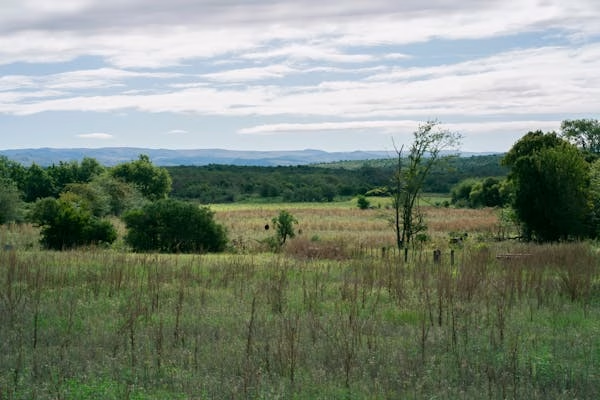
When to Visit Chilinji Pass
The ideal trekking season is from mid-June to late September. During this window:
Snow has melted enough to make the pass accessible (though patches remain).
The weather is more predictable, with minimal risk of sudden snowstorms.
Days are longer, offering more daylight for trekking.
Avoid winter and early spring as the pass becomes heavily snowbound and impassable.
How to Reach Chilinji Pass
Islamabad to Gilgit: Start with a flight (1 hour) or bus ride (14-16 hours) to Gilgit.
Gilgit to Passu: Continue your journey along the Karakoram Highway to Passu, a village famous for its cathedral-like peaks. This leg takes about 5-6 hours by car or van.
Passu to Shimshal: The road from Passu to Shimshal is narrow, winding, and carved into the mountains. It’s one of the most thrilling jeep rides in Pakistan, taking approximately 3-4 hours.
Shimshal to Chilinji Base Camp: The trek begins here. Over several days (typically 5-6), you’ll trek through Pamir-e-Tang, Zardgarben, and other intermediate camps before reaching Chilinji Pass. The full round trek may take 8 to 12 days, depending on weather and pace.
Trek Itinerary Overview (Standard Route)
Day 1: Shimshal to Furzin (4-5 hours)
Day 2: Furzin to Arbab Parian (6-7 hours)
Day 3: Arbab Parian to Shpodeen Camp (5-6 hours)
Day 4: Shpodeen Camp to Chilinji Base Camp (6-8 hours)
Day 5: Base Camp to Chilinji Pass, descend to Baba Ghundi (8-10 hours)
You may also choose to extend your trek into Chapursan Valley, finishing in Zood Khun or continuing toward the Baba Ghundi shrine.
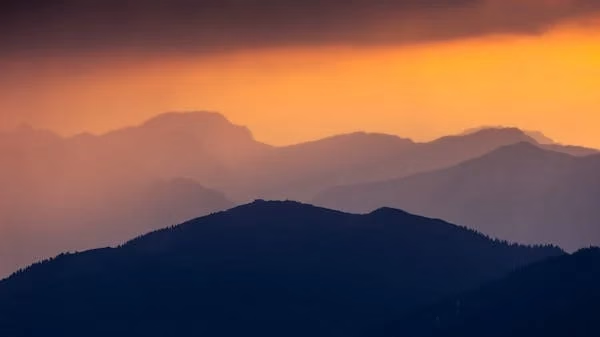
Major Activities and Experiences
High-Altitude Trekking: Conquer a 5,335-meter pass and navigate snowfields, rock moraines, and glacial streams.
Camping: Experience isolated, pristine campsites with night skies unlike anywhere else. No light pollution means a vivid Milky Way.
Cultural Interactions: Spend evenings talking with local porters and Shimshali guides who have storiesicher than any travel book.
Photography: From jagged peaks to quiet glacier-fed lakes, this trek is a photographer’s dream.
Wildlife Watching: With binoculars and patience, spot Himalayan wildlife in their natural habitat.
Additional Tips for a Safe and Rewarding Trek
Hire a Local Guide: Navigating Chilinji requires knowledge of the terrain, weather, and local customs. Hiring a Shimshali guide is highly recommended and supports the local economy.
Acclimatize Properly: Spend at least 2-3 days in Shimshal to adjust to the altitude before starting the trek.
Pack Light but Smart:
Essentials include: good hiking boots, layered clothing, UV sunglasses, water filtration system, and a satellite phone.
Don’t forget high-energy snacks and electrolyte supplements.
Stay Environmentally Conscious:
Leave no trace. Pack out all your waste.
Avoid plastic as much as possible.
Respect Local Culture:
Dress modestly in villages.
Always ask before taking photos of people.
Physical Preparation:
Start training at least 6 weeks before your trip with cardio, endurance hikes, and strength training.
Trekking Permits:
As of now, no special permit is needed for Pakistani citizens, but foreigners may require permission for areas near the Afghan border. Always check in advance with a local tour operator or the Deputy Commissioner’s office in Hunza.
Weather Watch:
Always monitor the weather forecast. Sudden rain or snowfall can make routes treacherous.
Inform someone back home about your trekking plan and schedule.
Accommodation and Supplies
In Shimshal: Basic homestays and guesthouses are available. Don’t expect luxury, but you will be welcomed warmly.
During the Trek: It’s all camping. You must carry tents, cooking gear, and food (or hire a team to manage this).
Tour Operators and Trekking Support
Several reputable trekking agencies based in Hunza, Gilgit, and Islamabad offer full support services, including permits, porters, guides, camping gear, and food logistics. Look for agencies that employ local Shimshalis and emphasize sustainable tourism.
Final Word on the Trek Experience
Chilinji Pass isn’t for the faint-hearted, but that’s precisely its charm. Every step you take on its raw trails is a step into a deeper understanding of nature, isolation, and yourself. If you’ve trekked around the world and are looking for that one unique trail to reset your spirit, this is it.
The first time I heard about Chilinji Pass, it wasn’t from a guidebook or a tourist website. It was during a campfire in Shimshal, while sipping salty tea under a starlit sky. An old villager, his face weathered by decades of mountain winds, spoke of a trail that once served as a lifeline between tribes — where traders, pilgrims, and dreamers crossed into the unknown. His words weren’t romanticized; they were honest. “It’s a hard trail,” he said. “But if you want to hear the heartbeat of these mountains, that’s where you go.”
I carried that thought with me when I finally stood at the crest of Chilinji Pass. There were no signboards, no Wi-Fi signals, no man-made comforts. Just a raw, breathtaking 360-degree view of the earth stitched together by clouds, ridgelines, and glaciers. On one side, Pakistan. On the other, the mysterious Wakhan Corridor of Afghanistan. It felt like standing at the edge of a forgotten world — the kind of place where maps end and stories begin.
What makes Chilinji Pass so different isn’t just its altitude or remoteness. It’s the kind of place that changes you quietly. The solitude carves out room for self-reflection. The physical exhaustion strips away ego. The people — from Shimshal porters to Chapursan’s farmers — remind you that simplicity and strength often go hand in hand. It is not an easy place to reach, and that’s the point. Some destinations demand effort because they offer something far more lasting than scenery: they offer perspective.
If you’re a traveler searching for more than Instagram views — if you want silence that isn’t empty, danger that isn’t reckless, and beauty that isn’t manufactured — then Chilinji Pass should be on your list. Don’t wait for it to be developed or “discovered.” Go while it’s still wild. Train your body. Prepare your mind. Gather a team you trust. And step into one of Pakistan’s last untamed corridors.
The mountains don’t call everyone — but if you’ve read this far, maybe they’re calling you.
Answer them
The Takeaway
Traveling in Pakistan is both exciting and accessible because to its varied transportation system. Every type of traveler has an alternative, from the convenience of ride-hailing services to the affordability of buses and trains.
Metro busses, Careem, and Uber are the most convenient means of transportation for brief city excursions. Pakistan’s picturesque train routes and opulent bus services offer comfortable and reasonably priced long-distance travel. The quickest option to travel long distances is still by domestic flight, particularly when traveling to far-flung northern locations.
Are you prepared to travel to Pakistan? Plan your vacation now to take advantage of the amazing nation’s transportation infrastructure!
Explore carefully planned tours to see the best of this fascinating nation. Please get in touch if you would need more travel advice; we are happy to assist you in organizing your upcoming journey! Additionally, by completing this form, you can personalize your journey.
FAQs – Everything You Need to Know
1. Is a permit required to trek Chilinji Pass?
For Pakistani citizens, no special permit is currently required to trek to Chilinji Pass. However, foreign travelers may need clearance due to the proximity to the Afghanistan border and the sensitive nature of the Wakhan Corridor. It’s advised to check with the Deputy Commissioner’s office in Hunza or hire a registered tour operator who can arrange documentation on your behalf.
2. How physically demanding is the Chilinji Pass trek?
The trek is considered very demanding and is suitable for experienced hikers. With long trekking days, glacier crossings, and an altitude of over 17,500 feet (5,335 meters), physical fitness, mental stamina, and prior high-altitude experience are essential. Beginners are advised to train thoroughly or consider shorter acclimatization treks beforehand.
3. What’s the best time of year to do the Chilinji Pass trek?
The ideal window is from mid-June to late September. During these months, snow has mostly melted, rivers are lower, and weather conditions are more stable. Outside of this season, heavy snowfall and landslides make the route inaccessible and dangerous.
4. How many days does the full trek take?
The standard itinerary takes 8 to 12 days, depending on your pace, acclimatization needs, and whether you exit via Chapursan Valley or return to Shimshal. Trekking times can vary with weather conditions and group logistics.
5. Can solo travelers do this trek?
Solo trekking is not recommended. The remoteness of the region, lack of mobile signals, and high risk of injury in difficult terrain make this trek best undertaken with a group and local guides. Even seasoned trekkers are encouraged to bring a team, or at least a porter and guide.
6. Are there any villages or rest stops along the route?
Once you leave Shimshal, there are no villages along the main route to Chilinji Pass. Campsites like Furzin, Arbab Parian, and Shpodeen offer natural resting points, but all accommodation is via camping. You must be self-sufficient or arrange logistics through a trekking company.
7. What kind of wildlife might I see?
You might spot ibex, golden eagles, marmots, and with great luck, even a snow leopard. The region borders Khunjerab National Park, known for its biodiversity. Trekkers are advised to respect wildlife and maintain a safe distance.
8. Are there any altitude sickness concerns?
Yes. Altitude sickness is a real concern at elevations above 4,000 meters, and Chilinji Pass exceeds 5,300 meters. Acclimatize for at least 2-3 days in Shimshal, stay hydrated, and ascend slowly. Carry medications like Diamox if you’re prone to altitude symptoms.
9. What gear should I bring for the trek?
Essential items include:
Sturdy trekking boots
Down sleeping bag (suitable for sub-zero temperatures)
Insulated layers and windproof outerwear
Trekking poles, headlamp, sunscreen, and sunglasses
Water purification tablets or filter
Satellite phone or GPS (if possible)
You’ll also need tents, food, and cooking gear if you’re not hiring a full-service trek company.
10. Is there internet or phone signal during the trek?
No. Once you leave Shimshal, there is no mobile reception or internet connectivity throughout the route. Inform family or friends of your expected return date, and consider bringing a satellite communicator for emergencies.
11. What makes Chilinji Pass unique compared to other treks in Pakistan?
Unlike popular treks like Fairy Meadows or Rakaposhi Base Camp, Chilinji Pass is entirely off-the-beaten-path. Its proximity to the Wakhan Corridor, the lack of commercialization, and the sheer diversity of landscapes make it one of Pakistan’s most wild and spiritually stirring adventures. It’s not just a trek — it’s an expedition into a forgotten frontier.

Daniel loves exploring off-the-beaten path destinations and making new friends. Writing blog posts since 2015, Daniel says it helps him to document his travels and cherish them. He loves the fact that what he writes might actually help someone have a better experience in Pakistan and Afghanistan. In his spare time, he loves listening to Tchaikovsky and spend time with his dog Coconut.




